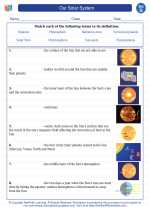Jupiter
Jupiter is the largest planet in our solar system and is known as a gas giant. It is a fascinating subject of study and has many interesting features.
Composition
Jupiter is composed primarily of hydrogen and helium, similar to the composition of the sun. It also contains traces of other elements and compounds, including water, methane, and ammonia. The planet has a thick atmosphere with bands of clouds that are made up of ammonia crystals and other compounds.
Size and Mass
Jupiter is the largest planet in our solar system, with a radius of about 69,911 kilometers (43,441 miles). It is so large that it could hold more than 1,300 Earths! Jupiter's mass is approximately 1.898 × 10^27 kilograms, which is about 318 times the mass of Earth.
Moons
Jupiter has an extensive system of moons, with over 79 known natural satellites. The four largest moons, known as the Galilean moons, are Io, Europa, Ganymede, and Callisto. These moons are of particular interest due to their unique characteristics, including volcanic activity on Io and the potential for a subsurface ocean on Europa.
Study Guide
- What is the composition of Jupiter's atmosphere?
- How does Jupiter compare in size to Earth?
- What are the four largest moons of Jupiter called, and what makes them unique?
- What is the Great Red Spot on Jupiter?
- How does Jupiter's magnetic field compare to Earth's?
Studying Jupiter can provide valuable insights into the formation and dynamics of our solar system. It also offers a glimpse into the potential for habitable environments beyond Earth.
.◂Science Worksheets and Study Guides Seventh Grade. Our Solar System

 Activity Lesson
Activity Lesson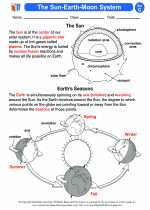
 Activity Lesson
Activity Lesson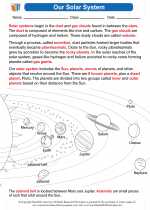
 Worksheet/Answer key
Worksheet/Answer key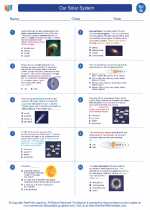
 Worksheet/Answer key
Worksheet/Answer key
 Worksheet/Answer key
Worksheet/Answer key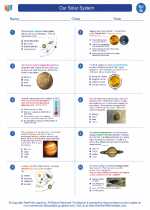
 Worksheet/Answer key
Worksheet/Answer key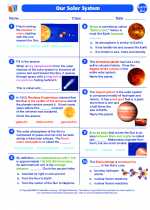
 Vocabulary/Answer key
Vocabulary/Answer key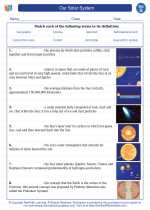
 Vocabulary/Answer key
Vocabulary/Answer key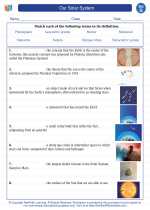
 Vocabulary/Answer key
Vocabulary/Answer key